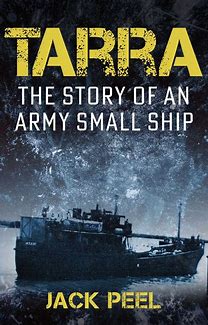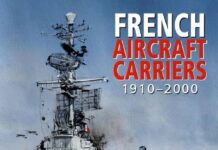
TARRA: The story of an Army Small Ship. By Jack Peel. Big Sky Publishing, Newport, 2020.
Reviewed by Tim Coyle
The Australian Defence Force is well into the development of a substantial expeditionary amphibious capability with the two Canberra class Landing Helicopter Docks, the Landing Ship Dock HMAS Choules, the 2nd Battalion (Amphibious) Royal Australian Regiment and Air Force airlift and combat air support. While looking to the future, the Australian Army’s past amphibious capability may have faded, its memory only retained by former, now ageing, members.
To rectify this gap in the historical record comes TARRA – the story of an Army Small Ship. The author, Jack Peel, had a long career in Army water transport, including as a TARRA crew member, culminating in his command of the Army Maritime School at Chowder Bay, Sydney. Peel’s affection for the little 300 ton ‘Vessel Cargo Wooden 125 ft’ is foremost in this part corps history and part memoire.
AV (Army Vessel) 1379 TARRA was one of 34 125-foot wooden cargo vessel built in Australia towards the end of World War Two and was commissioned in early 1946. While many of these ships were disposed of after the war, TARRA led a long and modest life but not without some potentially hair-raising missions. From 1946 to 1949 TARRA was engaged in ammunition dumping at sea off Newcastle, Sydney and Cairns. Peel graphically describes this process in which several ships, including TARRA’s naval cousin HMAS WOOMERA, dumped thousands of tons of wartime surplus ammunition – an expeditious operation which would be frowned upon today. WOOMERA suffered an ammunition fire off Sydney in 1960 and sank with the loss of two sailors. Peel’s description of the ammunition dumping procedures and dangers is quite stark and is illustrative of past attitudes to safety.
In 1950 TARRA was seconded to the War Graves Commission to remove human remains to burial sites in New Guinea; for this mission, the ship was painted white.
From 1952 to 1961 TARRA operated exclusively in the then Australian-administered territory of New Guinea in support of the Pacific Islands Regiment (PIR) based at Vanimo. The ship made 12 resupply voyages from Brisbane and during this period assisted in maritime rescues and experienced other adventures. These chapters provide a comprehensive overview of service life in the PIR.
Peel introduces many of the officers and soldiers who crewed TARRA over the years and the photographs of crew members relaxing on board indicate that the little ship, while austere and difficult to work at times, was nevertheless a happy one.
TARRA’s adventures are interleaved with Army unit changes and reorganisations which are quite complex at first reading. Peel diverges into descriptions of something called the ‘Pentropic’ division into which the Australian Army was re-organised in the mid-1960s. Based on a US Army initiative, it was a failure. Pentropic appeared to have had little, if any, effect on Army water transport so its inclusion in this history seems superfluous.
TARRA was beyond economical repair in April 1965 and sold. Renamed, the ship was to be used in the New Caledonia area, but the new owners expended little effort to make the ship seaworthy and it foundered off Newcastle in heavy seas. Peel devotes a whole chapter to this incident, demonstrating his affection for the little ship. Less emotive readers might question this emphasis as ‘too much detail’.
Peel flags the acquisition of four ex-US Landing Ship Medium (LSM) as the ‘new generation’ for Army water transport, following the TARRA era. He describes major Army amphibious exercises in which TARRA operated with the LSMs in the early 1960s which are a valuable record. Although Peel served in the LSMs, more detail of their operational characteristics and working conditions on board would have added to the wider historical record. The LSM, of which over 500 were built in World War Two, were innovative US designs which formed a major part of the huge suite of US landing craft.
The book suffers from several editing errors. Some dates are wrong in the text; ‘ a fairly typical “Milk Run”’ is referred to as Appendix A in the text while it presumably should be Appendix D: Chief Officer’s Log Entries for the Period’. The Williamstown naval dockyard is stated as ‘Her Majesty’s Australian Dockyard’ regarding a TARRA docking in 1950 – when King George VI was still on the throne.
The book’s Appendices are informative and support the text well. The textual date errors can be checked by reference to ‘Timeline AV1379 TARRA’ and there is a useful glossary of military and nautical terms.
This sometimes nostalgic history is the author’s ‘labour of love’ and, despite minor oversights, worthily contributes to Australian military maritime history.



